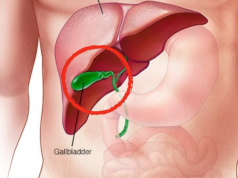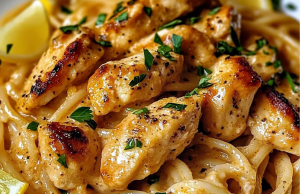When it comes to managing blood sugar, few people realize just how powerful vegetables can be. Far from being just side dishes, certain plant foods act almost like natural medicines—helping the body balance glucose levels, improve insulin sensitivity, and even protect the heart, nerves, and blood vessels from diabetic damage.
For those living with type 2 diabetes or prediabetes, filling your plate with the right vegetables isn’t just healthy—it’s strategic. These low-carb, fiber-rich, nutrient-dense foods help slow sugar absorption, reduce inflammation, and support long-term metabolic health.
Here are 10 science-backed vegetables every person with diabetes should know—and love.
🥦 1. Broccoli — The Sugar-Burning Superfood
Broccoli is a powerhouse when it comes to blood sugar control. It contains a compound called sulforaphane, which has been shown in studies to:
- Reduce fasting blood glucose levels
- Improve insulin sensitivity
- Protect against oxidative stress linked to diabetes complications
One study published in Science Translational Medicine found that sulforaphane lowered blood sugar in patients with type 2 diabetes, especially those who were obese.
👉 Tip: Lightly steam or sauté broccoli to preserve nutrients—avoid boiling.
🥬 2. Spinach — A Magnesium-Rich Glucose Balancer
Spinach is loaded with magnesium, a mineral that plays a critical role in glucose metabolism. Research shows that many people with type 2 diabetes are deficient in magnesium—and that boosting intake can improve insulin function.
Spinach also delivers:
- High levels of antioxidants (like lutein and beta-carotene)
- Zero impact on blood sugar due to its very low carb content
- Support for eye health (crucial for preventing diabetic retinopathy)
👉 Tip: Add raw spinach to smoothies or wilt into soups and omelets.
🥒 3. Bitter Melon (Bitter Gourd) — The Natural Insulin Booster
Used for centuries in Ayurvedic and traditional Chinese medicine, bitter melon (Momordica charantia) has earned modern scientific respect for its anti-diabetic properties.
It contains active compounds like charantin and polypeptide-p, which mimic insulin and help lower blood sugar. Studies show it can significantly reduce fasting glucose and HbA1c levels.
👉 Caution: Can interact with diabetes medications—consult your doctor before using regularly.
👉 How to eat: Sliced thin in stir-fries, juiced, or taken as a supplement.
🥕 4. Carrots — Sweet, But Blood-Sugar Friendly
Despite their natural sweetness, carrots have a low glycemic load and won’t spike blood sugar when eaten in moderation. Their bright orange color comes from beta-carotene, an antioxidant that supports immune and eye health—both vital for diabetics.
Plus, they’re high in fiber, which slows digestion and sugar release.
👉 Tip: Eat raw or lightly cooked. Pair with healthy fats (like olive oil) to boost nutrient absorption.
🧅 5. Onions — Nature’s Cholesterol and Sugar Regulator
Onions aren’t just flavor enhancers—they’re functional medicine. Rich in quercetin and sulfur compounds, onions have been shown to:
- Lower fasting blood glucose
- Reduce triglycerides and LDL cholesterol
- Decrease inflammation in blood vessels
A 2019 animal study found that onion extract significantly reduced blood sugar in diabetic rats—and human trials are promising.
👉 Best way to use: Raw in salads, roasted, or sautéed in savory dishes.
🥦 6. Kale — The Antioxidant Powerhouse
Kale is one of the most nutrient-dense foods on Earth. For people with diabetes, its benefits include:
- High levels of vitamin C, which helps reduce oxidative stress
- Fiber that stabilizes blood sugar
- Anti-inflammatory phytonutrients that protect the cardiovascular system
Studies suggest that regular consumption of leafy greens like kale can lower the risk of type 2 diabetes by up to 14%.
👉 Tip: Massage raw kale with lemon juice and olive oil to soften it for salads.
🥒 7. Cucumber — The Hydrating Blood Sugar Helper
With a water content over 95%, cucumbers are incredibly hydrating—and ideal for diabetics who need to manage weight and circulation.
They also contain a compound called cucurbitacin, which may help lower blood glucose and improve pancreatic function.
Bonus: Extremely low in carbs and calories, making them perfect for snacking.
👉 Try this: Slice and sprinkle with lemon, salt, and a dash of chili for a refreshing, zero-guilt snack.
🫘 8. Green Beans — The Gentle Glucose Buffer
Green beans (also known as French beans or string beans) are non-starchy and packed with soluble fiber, which forms a gel-like substance in the gut that slows down carbohydrate digestion.
This results in a slower, steadier rise in blood sugar after meals—ideal for glucose control.
They’re also rich in vitamin C, B vitamins, and chromium, a trace mineral involved in insulin signaling.
👉 Prep tip: Steam, roast, or stir-fry—avoid canned versions with added salt.
🧄 9. Garlic — The Ancient Diabetes Remedy
Garlic has been used medicinally for thousands of years—and modern science confirms its value for diabetics. Compounds like allicin help:
- Lower fasting blood glucose
- Reduce HbA1c
- Improve cholesterol levels
- Prevent plaque buildup in arteries
One clinical trial showed that aged garlic extract improved insulin sensitivity and reduced markers of inflammation in people with type 2 diabetes.
👉 Use liberally: Raw, crushed, or cooked. Just one clove a day can make a difference.
🫛 10. Okra (Lady’s Finger) — The Sugar Trap
Okra has gained attention for its unique ability to help regulate blood sugar. When soaked in water overnight, it releases a viscous, mucilaginous liquid that some believe helps slow sugar absorption in the gut.
Animal and human studies have shown that okra can significantly reduce post-meal glucose spikes and improve insulin response.
Some people drink “okra water” first thing in the morning; others enjoy it stewed, grilled, or in gumbo.
👉 Note: While more research is needed, many find it beneficial—especially as part of a balanced diet.
✅ How to Maximize Benefits: Smart Tips for Diabetics
- Focus on Non-Starchy Veggies: Fill at least half your plate with leafy greens, cruciferous, and colorful vegetables.
- Cook Smart: Avoid frying. Opt for steaming, roasting, grilling, or sautéing with healthy oils.
- Pair with Protein & Fat: Combining veggies with lean protein or healthy fats (like avocado or olive oil) further stabilizes blood sugar.
- Monitor Portions: Even healthy carbs add up. Stick to recommended serving sizes.
- Eat the Rainbow: Different colors mean different phytonutrients—variety is key.
🌱 Final Thought: Your Plate Is Your Prescription
Medication has its place—but so does food. For people with diabetes, vegetables aren’t just fuel. They’re medicine in its purest form.
From broccoli’s sulforaphane to garlic’s allicin, nature offers powerful tools to help manage blood sugar—without side effects.
So next time you’re at the market or planning a meal, remember:
🩸 The best defense against diabetes complications might not come in a pill bottle…
💚 It could be growing quietly in the produce aisle.
And all it takes is one bite at a time.










